UPSC Daily Current Affairs: 23rd August 2025 | Current Affairs & Hindu Analysis: Daily, Weekly & Monthly PDF Download
GS3/Science and Technology
Lunar Module Launch Vehicle (LMLV)
 Why in News?
Why in News?
The Indian Space Research Organisation (ISRO) is in the process of developing its heaviest rocket to date, the Lunar Module Launch Vehicle (LMLV), aimed at enhancing India's capabilities in space exploration.
Key Takeaways
- The LMLV is designed primarily for lunar exploration and aims to support India's first human mission to the Moon by 2040.
- This rocket will replace the Next Generation Launch Vehicle (NGLV) plan and will aid in the development of India's space station program.
- It will be as tall as a 40-storey building, significantly larger than the current LVM-3 model.
Additional Details
- Payload Capacity: The LMLV can carry up to 80 tonnes to Low Earth Orbit (LEO) and 27 tonnes to the Moon, making it suitable for human-rated spacecraft.
- Design:The vehicle is a partially reusable super heavy-lift rocket that consists of three stages:
- The first two stages utilize liquid propellants.
- The third stage operates on cryogenic propellant.
- It features strap-on boosters that are taller than the entire LVM-3 rocket and a total of 27 engines in the first stage (core plus boosters).
- Timeline: The LMLV is expected to be completed by 2035, demonstrating ISRO's commitment to advancing India's long-term space exploration goals.
Future missions planned using the LMLV include:
- Human Lunar Mission (2040 target): The LMLV will be capable of carrying crew modules weighing 18-20 tonnes for India's inaugural astronaut landing on the Moon.
- Bharatiya Antariksh Station (BAS): The LMLV will facilitate the deployment of heavy modules for India's planned five-module space station by 2035.
- Lunar Cargo Missions: It can transport approximately 27 tonnes to the Moon, aiding in logistics and infrastructure development on the lunar surface.
- Deep Space Exploration: The heavy-lift capacity of the LMLV could support interplanetary missions in the 2040s, extending beyond lunar initiatives.
In light of these developments, the LMLV is poised to significantly enhance India's position in global space exploration.
GS2/Governance
Set the Guardrails for AI Use in Courtrooms
Why in News?
The integration of Artificial Intelligence (AI) into judicial processes marks a significant shift in the administration of justice. In July 2025, the Kerala High Court became the first judicial body in India to unveil a policy regulating AI's use within the district judiciary. This initiative addresses the pressing issue of India's judicial backlog, which exceeds five crore pending cases, while also recognizing the potential of AI to enhance efficiency, accuracy, and speed in a strained system.
Key Takeaways
- The Kerala High Court's policy is a pioneering move in India regarding AI in the judiciary.
- AI tools can automate routine tasks, potentially alleviating judicial backlogs.
- There are significant risks associated with AI, including accuracy concerns and ethical implications.
Additional Details
- Promise of AI: AI offers advantages such as document translation, transcription, and legal research, which can speed up judicial processes and enhance accessibility for litigants from diverse linguistic backgrounds.
- Risks and Challenges: Over-reliance on AI can lead to translating errors and mistranslations, jeopardizing the accuracy of legal proceedings. Additionally, without clear frameworks, the use of sensitive personal data could lead to privacy violations.
- Safeguards and Frameworks: Training in AI literacy is essential for judges and legal professionals to understand the tools' limitations. Clear guidelines should govern AI's use in research and judgment writing, and standardized procurement frameworks can ensure ethical compliance.
The initiative by the Kerala High Court represents a crucial step towards the thoughtful adoption of AI in the judiciary. It emphasizes the need for balancing efficiency with fairness, transparency, and accountability, ensuring that technology enhances, rather than displaces, human judgment.
GS2/Polity
A Court Order That Was Barking Up the Wrong Tree
Why in News?
On August 11, 2025, the Supreme Court of India issued a controversial order mandating the rounding up and confinement of all street dogs in New Delhi into mass shelters. Though the order was stayed just eleven days later, its announcement highlighted significant flaws in legal reasoning, scientific understanding, and moral responsibility.
Key Takeaways
- The court's order was seen as a solution to the street dog issue, yet it contradicted scientific evidence.
- Mass confinement could lead to severe consequences, including overcrowding and public health crises.
- The issue of street dogs is intertwined with social dynamics, especially concerning the urban poor.
Additional Details
- Unscientific Approach: Evidence from countries like the United States shows that mass confinement leads to overcrowding and disease. Studies indicate that long-term confinement can cause significant behavioral issues in dogs.
- The order disregarded the vacuum effect, where removing dogs from one area leads to an influx from neighboring regions, exacerbating the problem rather than solving it.
- The removal of street dogs, which play a role in urban ecosystems, could lead to increases in rodent and monkey populations, creating new public health challenges.
- Animal Birth Control (ABC) Program: A more effective solution is the ABC program, which includes sterilization and vaccination. Cities like Jaipur have seen success with this approach, demonstrating sustainable declines in dog populations.
The Supreme Court's order exemplified a failure to apply scientific reasoning in addressing the issue of dog bites, focusing instead on a populist narrative. The Court's subsequent stay of the order is a step back towards a more compassionate and evidence-based approach. For India's urban challenges, it is crucial to prioritize humane and scientifically grounded strategies while ensuring accountability from governance institutions.
GS1/History & Culture
UGC Draft Curriculum Highlights Ancient Wisdom in Higher Education
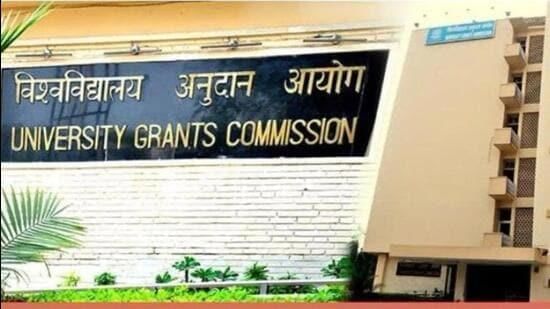 Why in the News?
Why in the News?
The University Grants Commission (UGC) has released a draft curriculum framework that integrates Indian Knowledge Systems (IKS) into undergraduate courses. This initiative has stirred discussions regarding the balance between traditional wisdom and academic rigor.
Key Takeaways
- The draft curriculum emphasizes the inclusion of Indian Knowledge Systems across various undergraduate disciplines.
- It aims to align higher education with India's cultural and intellectual heritage, as promoted by the National Education Policy (NEP) 2020.
- Stakeholder feedback is being sought on the proposed framework.
Additional Details
- Subject-wise Integration: Each academic discipline is encouraged to incorporate elements of Indian thought, blending traditional wisdom with modern educational outcomes.
- Mathematics: Proposed modules will include mandala geometry, yantras, and the study of temple architecture using āyādi ratios.
- Commerce: The curriculum will integrate Bhartiya philosophy and the Gurukul system, focusing on ethical leadership and sustainable practices.
- Economics: A focus on dharmic perspectives regarding wealth and trade ethics will contextualize economic studies within India's cultural traditions.
- Chemistry: Traditional fermented beverages will be studied alongside ancient concepts of the atom, merging historical insights with modern chemical education.
- Anthropology: Influential thinkers like Charaka and Sushruta will inform the curriculum, enriching the understanding of the relationship between nature and culture.
The draft curriculum represents a significant shift in India's educational philosophy. By embedding Indian Knowledge Systems into mainstream education, the UGC aims to decolonize curricula, promote indigenous heritage, and encourage ethical practices in various fields. If adopted, this framework could redefine higher education, ensuring that it is both culturally rooted and globally relevant. However, it remains essential to balance these ancient teachings with the principles of scientific inquiry and critical thinking.
GS2/International Relations
Canada Will Match U.S. Exemptions to Punishing Tariffs, Says Canadian Official
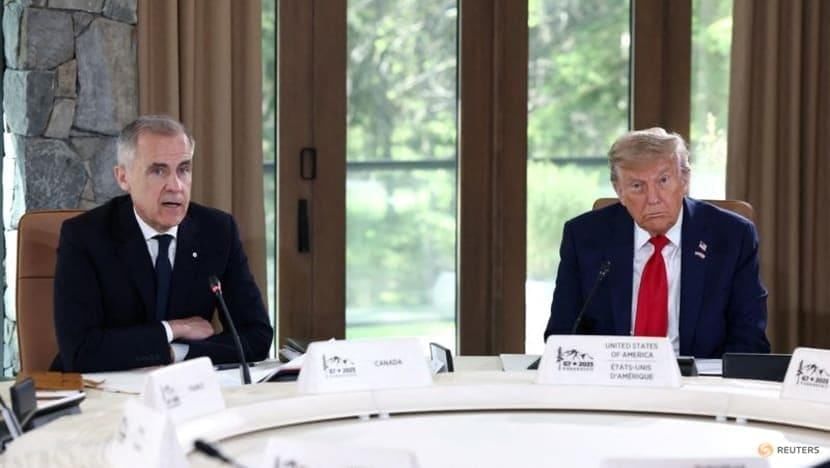 Why in News?
Why in News?
Canada has opted to eliminate retaliatory tariffs and align its exemptions on goods with those of the United States under the United States-Mexico-Canada Agreement (USMCA). This move is significant because it helps maintain tariff-free trade for more than 85% of Canada-U.S. commerce, despite ongoing sector-specific tariffs, such as the 50% duties on steel and aluminum, which continue to impact Canadian industries. Given that over 75% of Canada’s exports are directed to the U.S., this development is vital for Canada’s economic stability.
Key Takeaways
- Canada is mirroring U.S. tariff exemptions, indicating a shift from previous retaliatory measures.
- This policy reversal is significant as it marks the first time Canada is rolling back tariffs to align with U.S. exemptions under USMCA.
- Preservation of tariff-free trade is crucial for Canada, given its heavy trade dependence on the U.S.
Additional Details
- USMCA Pact: Established in 2020, the USMCA replaced NAFTA and offers preferential treatment to Canadian and Mexican goods entering the U.S.
- Carve-out Mechanism: Goods included in this agreement are protected from punitive tariffs, ensuring continued market access.
- Review Timeline: The USMCA agreement will undergo a review in 2026, making it crucial for Canada to maintain good trade relations.
- Benefits for Canada: Canadian goods enjoy protection from most punitive tariffs, ensuring export stability with 75% of exports directed to the U.S.
- Challenges Ahead: Despite exemptions, Canada faces sector-specific U.S. tariffs and potential renegotiation risks that could destabilize its economy.
Canada's strategy to align its tariffs with U.S. exemptions under the USMCA illustrates a blend of pragmatism and the challenges posed by economic dependence. While this agreement facilitates tariff-free trade for the majority of goods, the existence of sector-specific tariffs and the possibility of renegotiation underscore the precarious nature of North American trade relations. Canada must navigate the complex balance between maintaining its sovereignty and addressing its economic reliance on the U.S., a situation that is increasingly pertinent in the current global climate of protectionism.
GS3/Economy
Migration Integral to Globalisation, Says Amartya Sen
Why in News?
Nobel laureate Amartya Sen, during a recent discussion with students in Kolkata on August 22, 2025, emphasized that migration is a critical component of globalisation and has historically been a driving force behind human progress. He highlighted the importance of diversity as a cornerstone of Indian society, which fosters genuine growth and development for the nation and its people.
Key Takeaways
- Migration serves as both a catalyst and a result of globalisation.
- Diversity is fundamental to India's societal structure, promoting growth.
- Migration leads to significant contributions to sustainable development.
- Amartya Sen advocates for the recognition of migrants' rights.
Additional Details
- Migration and Global Economic Changes: Migration is influenced by the restructuring of global labour markets, particularly the demand for semi-skilled and unskilled workers in developed countries. Migrants tend to find jobs in informal sectors such as textiles, construction, and agriculture.
- International Migration: Driven by economic opportunities, many migrants find their way to developed nations, often filling labor shortages.
- Internal Migration: This is associated with industrial relocation and tourism growth in the Global South, where rural workers, particularly women, relocate for low-paying yet essential jobs.
- Contributions of Migrants:
- Economic Support: Remittances are vital for household survival and local economic development.
- Skill Transfer: Returning migrants often bring new skills that can lead to non-farm opportunities if the infrastructure is supportive.
- Social Impact: Migration encourages cultural exchange and reshapes community dynamics, particularly for women and youth seeking greater autonomy.
- Key Challenges:
- Restrictive Policies: Immigration controls can inadvertently strengthen illegal smuggling and exploitative employment.
- Exclusion from Urban Services: Internal migrants often struggle to access housing, healthcare, and education.
- Informal Labour Exploitation: Undocumented migrants frequently work under poor conditions with limited rights.
- Unequal Benefits: Skilled migrants tend to have better opportunities compared to their unskilled counterparts.
- Gender Disparities: Women migrants face unique challenges but can be transformative agents when given access to resources.
In conclusion, migration is an essential aspect of globalisation that has historically contributed to human progress. While it presents certain challenges, including vulnerability to exploitation and inequality, it also offers significant opportunities for economic growth, cultural exchange, and sustainable development. Recognizing and safeguarding the rights of migrants is crucial for harnessing migration as a force for inclusive global development.
GS2/International Relations
Integrated Food Security Phase Classification (IPC) and Famine Declaration
Why in News?
The United Nations has officially announced a famine in Gaza, following an assessment by the Integrated Food Security Phase Classification (IPC) panel.
Key Takeaways
- The IPC is a global tool used to assess and classify food insecurity.
- The recent famine declaration in Gaza highlights the ongoing food crisis.
Additional Details
- What is IPC: The Integrated Food Security Phase Classification (IPC) is a standard method for assessing the severity of food insecurity, established in 2004 during the Somalia food crisis by the Famine Early Warning Systems Network (FEWS NET) and its partners.
- Coordination: The IPC is coordinated by the UN Food and Agriculture Organization (FAO) and aims to support early warnings, evidence-based decision-making, and coordinated responses from governments, UN agencies, NGOs, and donors.
- Partnership Model: The IPC incorporates collaboration among UN bodies, NGOs, academic institutions, and national governments.
- Five-Phase Classification System:
- Phase 1: Minimal
- Phase 2: Stressed
- Phase 3: Crisis
- Phase 4: Emergency
- Phase 5: Catastrophe/Famine
- Methodology: The IPC relies on evidence from food access, livelihoods, nutrition, and mortality, requiring technical consensus among analysts to ensure transparency and accuracy. It enables real-time assessments and 6-month forecasts to facilitate timely actions.
- Definition of Famine:Famine is classified as IPC Phase 5, the highest level of food insecurity, which is declared when:
- At least 20% of households face extreme food gaps.
- 30% of children under five suffer from acute malnutrition (wasting).
- The death rate is 2 adults or 4 children per 10,000 people per day.
- Purpose of Declaration: The declaration aims to mobilize international aid and emergency operations, trigger food, health, and logistics support, and raise global awareness and funding for urgent interventions.
- Past Declarations: Notable famine declarations have occurred in Somalia (2011), South Sudan (2017, 2020), and Darfur, Sudan (2024).
This current crisis emphasizes the importance of international cooperation and timely responses to prevent further deterioration of food security in affected regions.
GS2/International Relations
Lipulekh Pass: Current Developments
Why in News?
India has formally dismissed Nepal's concerns regarding the resumption of border trade with China through the Lipulekh Pass located in Uttarakhand.
Key Takeaways
- The Lipulekh Pass is a high-altitude Himalayan pass situated at approximately 17,000 feet.
- This pass serves as a vital connection between Uttarakhand's Kumaon region and Taklakot in Tibet.
- It is also the shortest route for pilgrims traveling to the Kailash Mansarovar.
- Historically significant as a trade route between India and China since 1954, trade was interrupted during the COVID-19 pandemic but has since resumed.
- The pass holds strategic importance for India due to its location near the borders of India, China, and Nepal.
Additional Details
- Limpiyadhura–Lipulekh–Kalapani Dispute: This dispute originates from the 1815 Treaty of Sugauli, which established Nepal's western boundary at the Kali (Mahakali) River.
- India’s Position: India asserts that the Kali River's source is near Lipulekh, thus claiming both Lipulekh and Kalapani as part of its territory.
- Nepal’s Position: Nepal contends that the Kali River begins at a different location, extending its claim to include Lipulekh and Kalapani.
- Disputed Area: Approximately 370 square kilometers of land, which has been under Indian administration since the 19th century, is contested.
- In 2020, Nepal released a new map declaring Limpiyadhura, Lipulekh, and Kalapani as its territory, which India rejected due to the lack of historical evidence supporting Nepal's claims.
The ongoing border disputes between India and Nepal are significant, as both countries share a 1,770 km open border across five Indian states: Uttarakhand, Uttar Pradesh, Bihar, West Bengal, and Sikkim. These disputes often create diplomatic tensions, despite the historically close relations between the two nations.
In the context of historical border agreements and administrative practices, India emphasizes its long-standing claims, while Nepal seeks constitutional recognition of its territorial assertions.
UPSC 2007 Question: Which one of the following Himalayan passes was reopened around the middle of the year 2006 to facilitate trade between India and China?
- (a) Chang La
- (b) Jara La
- (c) Nathu La*
- (d) Shipki La
GS3/Science and Technology
Reforming the Steel Framework
Why in News?
The Prime Minister's speech on Independence Day 2025 marked a significant shift towards focusing on frontier technologies, including semiconductors, clean energy, artificial intelligence (AI), quantum computing, and defense indigenization. This speech acknowledged the bureaucratic inertia and regulatory challenges that continue to impede India's technological ambitions.
Key Takeaways
- The Prime Minister emphasized the need for India to develop capabilities in critical areas such as semiconductors and electric vehicles (EVs).
- India aims to reduce dependency on imports within two decades.
- India is currently the largest per capita data consumer globally, surpassing China and the US.
Additional Details
- Current Technological Landscape: India has established strengths in mid-tech sectors, particularly in fintech, data access, and digitization. Key cities like Bengaluru and Hyderabad are emerging as high-tech hubs.
- Import Dependency: Despite advancements, India heavily relies on imports for semiconductors and defense hardware, highlighting the need for self-reliance.
- Bureaucratic Challenges: The colonial legacy of bureaucratic structures prioritizes control over innovation, with rigid frameworks inhibiting progress. Efforts for reform, including the Veerappa Moily Committee's recommendations, have not been fully realized.
- Importance of Reforms: Regulatory and judicial reforms are critical to eliminate persistent red tape and improve the investment climate, particularly in high-tech sectors.
- International Comparisons: Countries like the US and China showcase models where political leadership can effectively drive national interests, contrasting with India's bureaucratic hurdles.
- Vision for Viksit Bharat@2047: For India to become a deep-tech powerhouse, it must undergo significant governance restructuring alongside financial investments.
In conclusion, India's aspirations in deep-tech must align with necessary institutional reforms. The Prime Minister's 2025 address highlighted the need to address bureaucratic bottlenecks as part of the broader goal of achieving Atmanirbhar Bharat. The upcoming centenary of the UPSC in 2026 presents a unique opportunity to reshape governance to meet India's 2047 objectives.
GS1/History & Culture
Gopal Patha and Direct Action Day
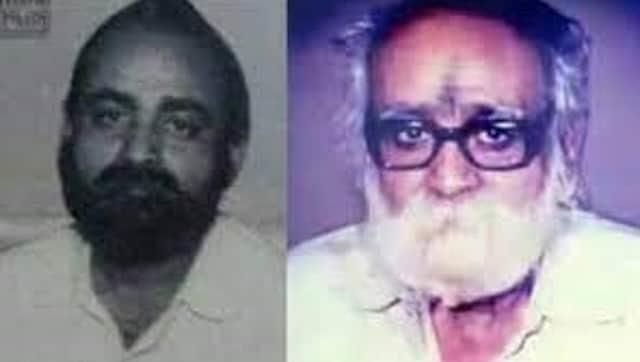 Why in News?
Why in News?
A recent movie has highlighted the 1946 "Great Calcutta Killing," which involved four days of communal riots on Direct Action Day (August 16, 1946). This event has brought attention to Gopal Patha's significant role in mobilizing Hindu youth during this tumultuous period.
Key Takeaways
- Direct Action Day was called by the All-India Muslim League to advocate for the Partition and the establishment of Pakistan.
- On August 16, 1946, a public holiday was declared by Bengal Premier H. S. Suhrawardy, leading to a mass rally of nearly 100,000 people in Calcutta.
- Violence erupted immediately, resulting in significant casualties between 5,000 and 10,000, with around 15,000 injured.
- The violence lasted for four days and spread to other regions, requiring military intervention.
Additional Details
- About Direct Action Day: Initiated by the All-India Muslim League, it aimed to press for the Partition of India and the creation of Pakistan.
- Role of Gopal Patha: Born in 1916 in Bowbazar, Calcutta, Gopal Mukherjee, known as Gopal Patha, led a street group of approximately 800 men, mobilizing them for defense during the riots. He emphasized retaliation against rioters while forbidding harm to women, children, or ordinary citizens.
- Influences: Gopal Patha was associated with revolutionary groups such as the Atma Unnati Samiti and was influenced by Subhas Chandra Bose.
The events of Direct Action Day serve as a stark reminder of the communal tensions that existed in pre-partition India and highlight the pivotal role individuals like Gopal Patha played during this period.
GS3/Economy
AI and the Future of Work in India - Towards Inclusive Growth
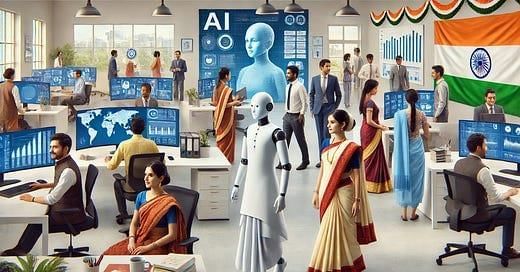 Why in News?
Why in News?
Artificial Intelligence (AI) is rapidly transforming global economies. In India, there is a pressing need to ensure that AI enhances productivity and fosters inclusive employment, rather than exacerbating existing inequalities.
Key Takeaways
- AI is projected to reshape over 10.35 million jobs and create 3 million new tech roles in India by 2030.
- The potential for job transformation rather than job loss is supported by the International Labour Organisation (ILO).
- Policy choices will determine whether AI leads to employment growth or increased inequality.
Additional Details
- AI's Impact on Various Sectors:
- Agriculture: Limited exposure to AI technologies.
- Labour-intensive sectors: Especially vulnerable, particularly in services which contribute significantly to GDP and employment.
- Automation vs. Augmentation:
- Automation replaces workers and risks large-scale job losses.
- Augmentation complements human effort, enhancing productivity while preserving jobs.
- Key argument by Economist and Nobel Laureate Daron Acemoglu emphasizes that AI’s impact is a policy choice, highlighting the need to avoid the "automation trap."
- Policy Priorities for Inclusive AI:
- Focus on skilling and lifelong learning across educational institutions.
- Large-scale reskilling initiatives are being undertaken by major firms, showcasing positive pathways.
- Programs like Atal Innovation Mission and Startup India need to be scaled to reduce inequality.
- Support for MSMEs through tailored digital tools and skills development is crucial.
- Ensuring Competitive AI Ecosystems:
- Prevent monopolization in AI markets and ensure contestability.
- Promote open APIs and interoperable systems for wider access.
- Encourage the development of Indigenous Small Language Models (SLMs) and vernacular AI tools.
In conclusion, India is at a pivotal point in its journey with AI. The decisions made today regarding AI adoption will significantly influence whether it becomes a tool for bridging gaps in employment and productivity or a factor that widens existing inequalities. By emphasizing augmentation over automation and investing in skills development, India can leverage AI as a powerful driver for inclusive and equitable growth.
GS2/Governance
NITI Aayog Proposes Model Framework for Homestays
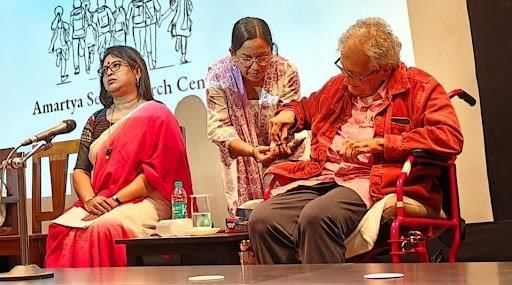 Why in News?
Why in News?
NITI Aayog has published a report titled Rethinking Homestays: Navigating Policy Pathways, which outlines a framework for States to harmonize regulations and foster an inclusive homestay ecosystem. This report emphasizes the significant economic potential of alternative accommodations like homestays and Bed and Breakfast (BnB) in promoting sustainable tourism growth.
Key Takeaways
- India's travel and tourism sector is recovering post-pandemic, significantly driven by domestic tourism.
- The sector contributed ₹21.15 lakh crore to the economy in 2024, a 21% increase from 2019.
- NITI Aayog's report provides a strategic roadmap to enhance local incomes and support community-based tourism.
Additional Details
- Economic Potential: Homestays can stimulate sustainable growth, create local jobs, and encourage entrepreneurship, particularly in rural and semi-urban regions.
- Cultural Value: They offer travelers authentic experiences, merging cultural immersion with livelihood opportunities.
- Policy Goal: To outline a strategic roadmap for States to integrate homestays as a vital component of India's tourism landscape.
- Core Recommendations: The report suggests a light-touch regulatory framework, digital empowerment through a centralized portal, capacity building for hosts, and financial incentives focused on destination-level support.
The model policy framework aims to simplify processes, integrate technology, and enhance cultural authenticity, positioning homestays as a means for regional development rather than merely accommodation. NITI Aayog's initiative calls for harmonized state policies, digital integration, and targeted incentives to unlock the full potential of the homestay sector while preserving cultural heritage and local livelihoods.
|
44 videos|5271 docs|1113 tests
|
FAQs on UPSC Daily Current Affairs: 23rd August 2025 - Current Affairs & Hindu Analysis: Daily, Weekly & Monthly
| 1. What is the Lunar Module Launch Vehicle (LMLV) and its significance in space exploration? |  |
| 2. How can AI be utilized in courtroom settings while maintaining ethical standards? |  |
| 3. What was the purpose of the court order that was described as "barking up the wrong tree"? |  |
| 4. What are the key features of the UGC draft curriculum that highlights ancient wisdom in higher education? |  |
| 5. How does migration contribute to globalization according to Amartya Sen? |  |





















